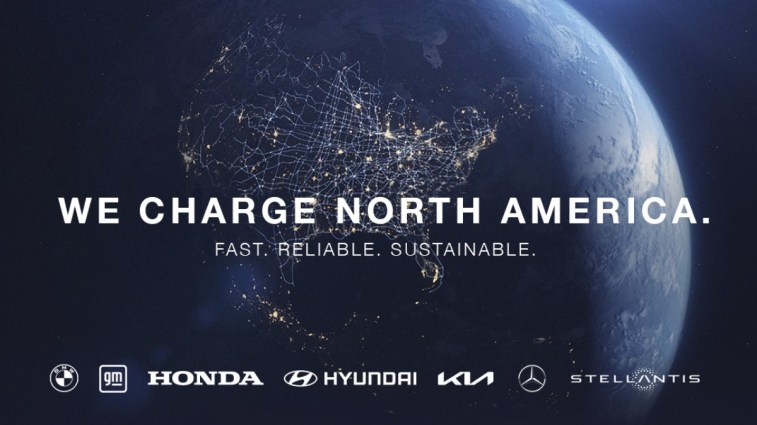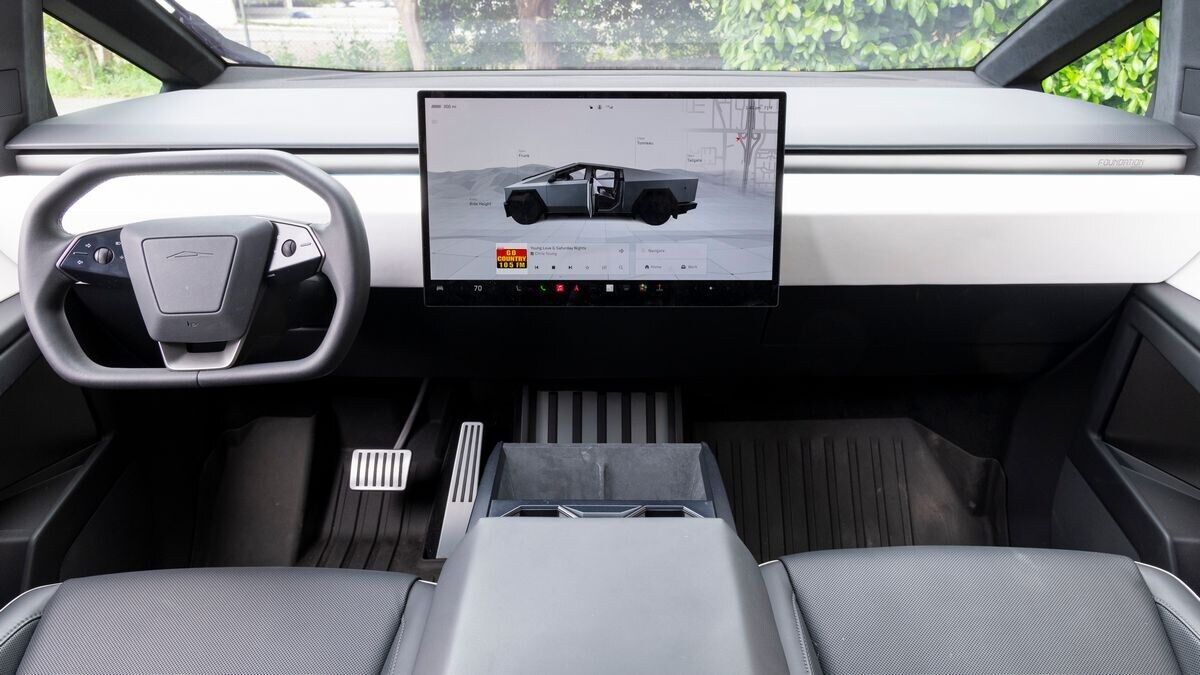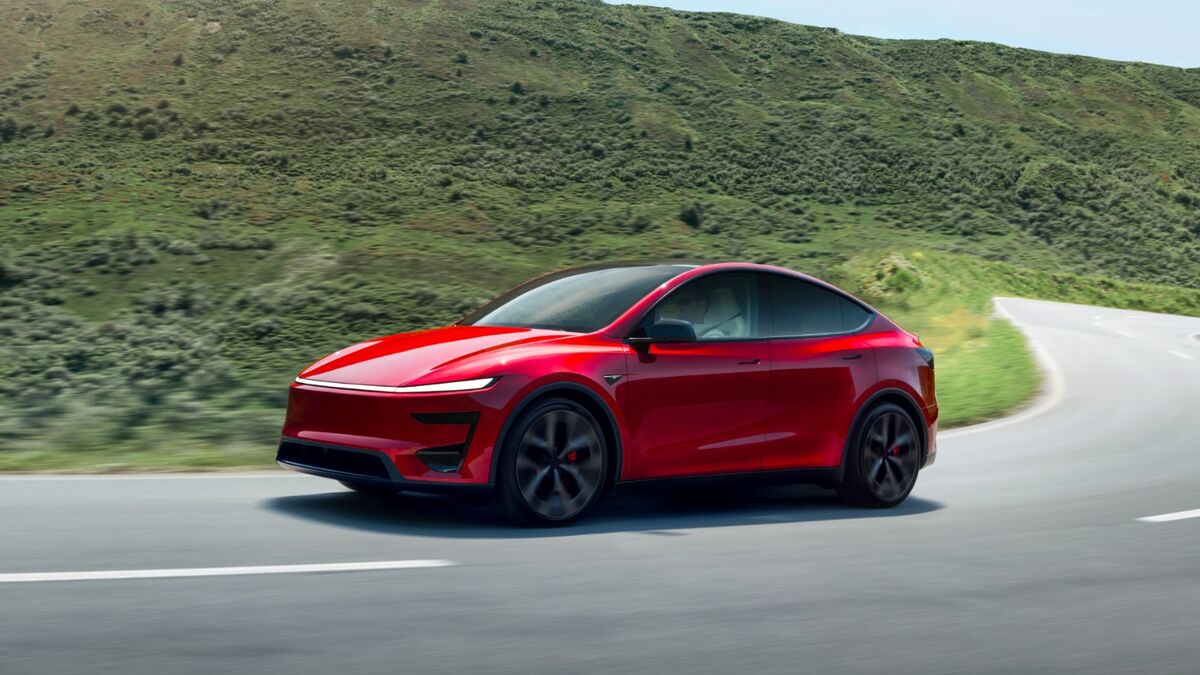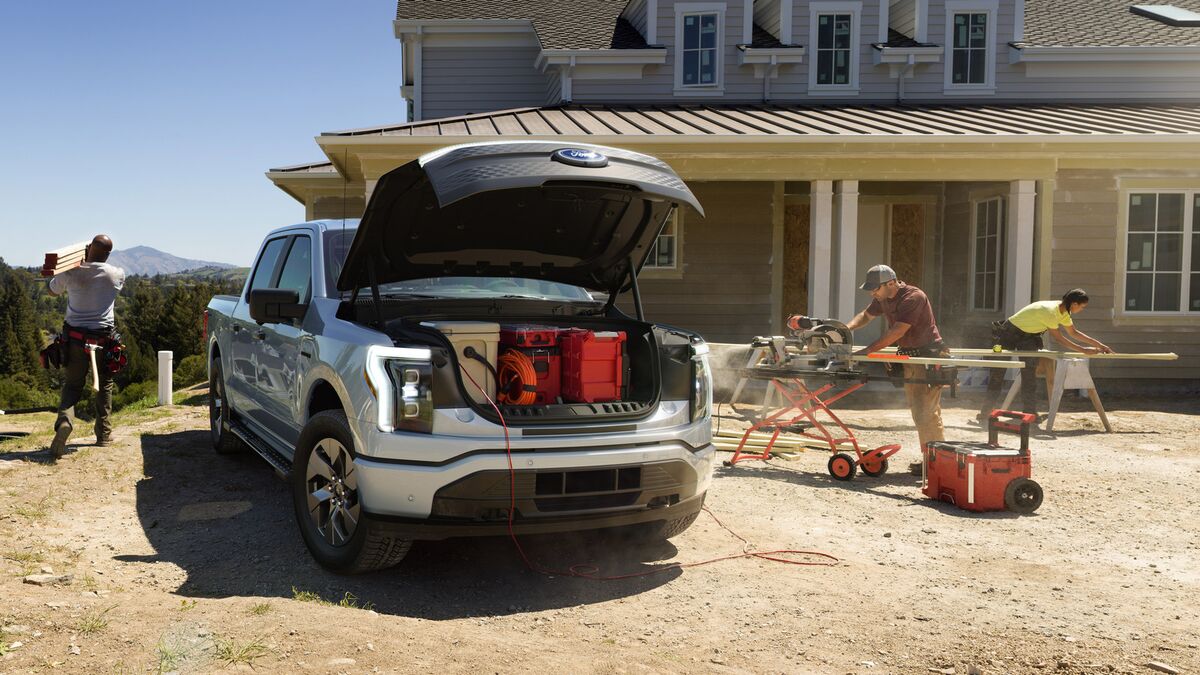
BMW Group, General Motors, Honda, Hyundai, Kia, Mercedes-Benz Group, and Stellantis (parent company of Chrysler, Dodge, Jeep, and others) will unite in the effort.
The group plans “to install at least 30,000 high-powered charge points in urban and highway locations to ensure customers can charge whenever and wherever they need.”
The stations will have both the Combined Charging System (CCS) and Tesla-derived North American Charging Standard (NACS) plugs. For now, the joint network appears to lack a single name.
A Growing Need
Most automakers have announced plans for mostly-electric lineups by the middle of the 2030s. Electric vehicles (EVs) made up about 7% of all car sales in the U.S. last quarter, but that number is steadily rising.
But America’s infrastructure needs to catch up to make driving on electricity with simple as driving with gasoline.
One recent study found that America needs at least 1,104 fast-charging stations located along major highways to make coast-to-coast travel seamless for the number of EVs already on the roads. As that number grows, so will the need.
In announcing their joint venture, the automakers noted, “The NREL (National Renewable Energy Laboratory) estimates that 182,000 DC fast chargers will be needed to support 30-42 million plug-in vehicles expected on the road by 2030.”
A Big Patch for the Patchwork
No single entity operates America’s charging stations. Instead, a patchwork of companies operates separate networks. Many EV drivers can use most but may need to sign up for separate payment systems and smartphone apps for each one.
Some stations are operated by private companies that do nothing but operate charging networks. Others are owned by electric utilities.
The patchwork of small operators also leads to reliability problems. One prominent study found that more than one in five charging attempts fails thanks to broken chargers or faulty payment systems.
There’s one bright spot in the chaos – Tesla’s Supercharger network is America’s largest charging web and proved more reliable in that same study.
Tesla recently opened its network for use by owners of some other brands’ EVs.
The massive effort by seven automakers appears set to create something like the Tesla network alongside it.
Move Raises Questions About Tesla’s Continued Dominance
Since Ford first announced that it had negotiated access to Tesla’s walled garden of chargers, many automakers have rushed to follow. That includes two of these seven.
GM and Mercedes-Benz have already signed on to adopt the Tesla-style NACS plug and let their owners use Tesla’s chargers. The other five have not.
This kind of effort takes months of discussions before an announcement, so it’s likely that some of them may have seen building their own walled garden as an alternative to joining Tesla’s. But building this network will take time.
The group says “The first stations are expected to open in the United States in the summer of 2024 and in Canada at a later stage.”
By early 2024, owners of many brands’ EVs will be using Tesla Superchargers with the help of adapters. We’ll be watching to see whether Hyundai, Stellantis, and others join them, or wait for this network to stand up as an alternative.
With America well short of the number of chargers it needs, there’s room for more than one large network.
Most EV owners do the majority of their charging at home, so chargers may never be as ubiquitous as gas stations. But there’s no reason public charging networks can’t be as interchangeable as gas stations operated by many companies.
Mercedes-Benz Group CEO Ola Källenius explains, “The fight against climate change is the greatest challenge of our time. What we need now is speed – across political, social, and corporate boundaries. To accelerate the shift to electric vehicles, we’re in favor of anything that makes life easier for our customers.”
The White House praised the move, with Energy Secretary Jennifer Granholm saying, “We are seeing tremendous momentum as private companies, cities, states, and utilities join forces behind our shared goal of convenient, reliable charging that reaches every pocket of America. This is what an all-of-America effort looks like.”







